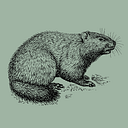Event Covers Impact of Deer in the Hudson Valley
Deer, of course, are natural creatures. But what they are doing to the environment of the Hudson Valley is anything but natural.
On February 16th, scientists from the Carey Institute held a virtual event called “Oh Deer! How Deer Shape Forests in the Catskills & Beyond.” The focus of the event was on how the overpopulation of deer in the Hudson Valley and Catskill mountains destroys the ecosystems of those areas.
There were three different speakers at the event, each one having a different topic to discuss. The first to speak was Dr. Charles Canham, who discussed the history of deer in the Hudson Valley and how the situation relates to deer populations in other countries. Then, Dr. Lynn Christensen highlighted how deer are damaging the ecosystem, and Brendan Quirion presented the best ways to mitigate the deer population. The entire discussion was led by Dr. Joshu Ginsberg, who is the president of the Carey Institute.
Canham’s discussion really laid the groundwork for the entire discussion, as he went through how the deer population has been able to grow to astronomical proportions as humans have removed natural predators from the Hudson Valley ecosystems. Normally, the whitetail deer population would be mitigated by predators like wolves and mountain lions, as well as human hunters. But since those predators can’t coincide with humans in the same way that deer can, they have faded from the region.
Christensen, who is a biogeochemist that studies plant-animal-soil interaction, spoke next. She went into detail on how this overpopulation has led to the destruction of the vegetation and understory of forests in the Hudson Valley and the Catskills. Essentially, she talked about how deer eat most of the plants and grass growing from the ground, resulting in forests that have barren grounds with very few small plants.
“I think many people think that forests should look like parks,” said Christensen after the event. “If you go to a forest that doesn’t have a lot of large herbivores, they don’t look like the forests around here.”
If scientists hope to restore the forests to their natural state, then the recovery would take nearly 80 years. And that would be if deer weren’t around to eat the plant life as it regrows.
Brendan Quirion spoke next to offer a solution to the deer overpopulation issues, stating that the most efficient and humane way to mitigate the deer population is to increase hunting in the Hudson Valley. Increasing hunting would also increase the availability of venison, which could be used as a beef substitute and could be given to the homeless through programs like Hunters for the Hungry.
Once the event was over, the Zoom chat was flooded with questions on what was covered in the discussions. Most of those questions revolved around the mitigation of the deer population and if there were more humane routes, such as birth control.
“We get these types of questions a lot,” said Quirion in response to those questions. “Really, implementing some type of birth control, whether it be chemical or otherwise, is actually more inhumane than hunting. That’s because, by using birth control, we would be altering the animal’s nature, which could cause them to be shunned from groups or force it to change its behavior.”
Ultimately, the event was a major success for the Carey Institute, as people from all across American tuned in to hear the discussion.
“The event had over 1,100 people sign up and 550 plus attended,” said Lori Quillen, Director of Communications at the Carey Institute. “We plan to partner with Catskill Mountainkeeper again, via the Catskill Science Collaborative, to host another deer-focused event. There were so many great audience questions that we did not get to.”
The second event likely won’t take place until later in the year. Regardless, there should still be a great amount of interest from those interested in the impact of deer and from the scientists at the Cary Institute.
